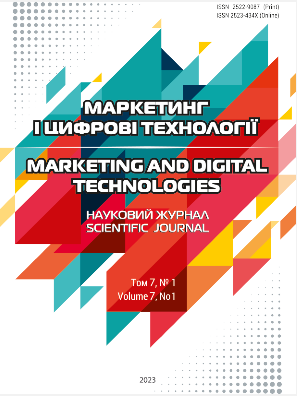Тенденції медіаспоживання в Україні у воєнний час
Анотація
У статті розкрито основі тенденції медіаспоживання в Україні у воєнний час, а також порівняння його з довоєнним, тобто спосіб, у який люди взаємодіють з різними формами медіа, такими як телебачення, інтернет, друковані видання та радіо. Розуміння цих тенденцій важливе для медіакомпаній, рекламодавців і політиків, оскільки воно може допомогти у прийнятті рішень щодо створення та розповсюдження контенту, а також розроблення рекламних стратегій. За останні роки відбулися зміни у звичках споживання медіа: дедалі більше людей звертаються до цифрових платформ для отримання новин та розваг. Поява потокових сервісів, соціальних мереж і мобільних пристроїв суттєво вплинула на традиційні моделі споживання медіа. Це призвело до занепаду традиційних форм медіа, таких як газети і телебачення, і збільшення кількості онлайнових джерел новин і платформ для потокового відео.
Ключові слова: медіаспоживання, тенденції, новинний контент, соціальні мережі, медіаканали, засоби масової інформації.
DOI: 10.15276/mdt.7.1.2023.10
- War replaces disease as the world’s most newsworthy subject. Russia’s invasion accounted for one-quarter of news-reading hours. The economist. URL: https://www.economist.com/graphic-detail/2022/12/20/war-replaces-disease-as-the-worlds-most-newsworthy-subject (дата звернення 25.10.22).
- Зоя Лобод. Бренд-комунікація в соцмережах під час війни. 2022. URL: https://webpromoexperts.net/ua/blog/brend-kommunikaciya-v-socsetyah-vo-vremya-voyny/ (дата звернення 25.10.22).
- "Медіаспоживання в Україні: зміна медіапотреб та програш російської пропаганди". Презентація дослідження 15.02.2022. URL: https://www.ukrinform.ru/rubric-presshall/3400545-mediapotreblenie-v-ukraine-izmenenie-mediapotrebnostej-i-proigrys-rossijskoj-propagandy-prezentacia-issledovania.html (дата звернення 25.10.22)
- A Dictionary of Media and Communication. Oxford Reference URL: https://www.oxfordreference.com/display/10.1093/oi/authority.20110803100146530 (дата звернення 25.10.22)
- Аналітичний звіт. Медіаспоживання в умовах війни. URL: https://www.kiis.com.ua/materials/pr/20220817_z/Дослідження Демократія%2C права і свободи громадян та медіаспоживання в умовах війни.pdf (дата звернення 25.10.22)
- Дослідження Київського міжнародного інституту соціології на замовлення ОПОРИ, травень 2022. URL: https://www.oporaua.org/report/polit_ad/24068-mediaspozhivannia-ukrayintsiv-v-umovakh-povnomasshtabnoyi-viini-opituvannia-opori (дата звернення 25.10.22)
- Телеграм-бот – бойкот російських товарів та компаній URL: https://t.me/BoycottRussiaBot (дата звернення 25.10.22)
- USAID-Internews 2020 Media consumption survey. URL: https://internews.org/wp-content/uploads/legacy/2020-10/2020-Media-Consumption-Survey-FULL-FIN-Eng.pdf [in English] (дата звернення 25.10.22)
- Медіаспоживання та громадська активність українців, які знайшли тимчасовий притулок у Польщі. URL: https://my.ua/news/cluster/2023-01-12-ukraintsy-v-polshe-osnovnym-istochnikom-novostei-vybrali-sotsseti (дата звернення 25.10.22)
- Олексій Грибановський. Які західні компанії вже продали бізнес у Росії URL: https://www.epravda.com.ua/publications/2022/12/23/695354 (дата звернення 25.10.22)
- Nightingale. V. The handbook of media audiences. Wiley-Blackwell, 2011. 550p.
- Українські медіа, ставлення та довіра у 2022 р. Опитування USAID-Internews щодо споживання медіа. 2022. URL: https://internews.in.ua/wp-content/uploads/2022/11/Ukrainski-media-stavlennia-ta-dovira-2022.pdf?fbclid= IwAR3HW8VIA0k-9KvpxWnNG50MDFx7vVbqnX-xnTkwTseT7WzsxeHr4j67Gbs (дата звернення 25.10.22)
- Аліна Бородій Сприйняття рекламного креативу під час війни URL: https://services.google.com/fh/files/events/webinar.pdf (дата звернення 25.10.22)
-
pdf_10
скачано раз




